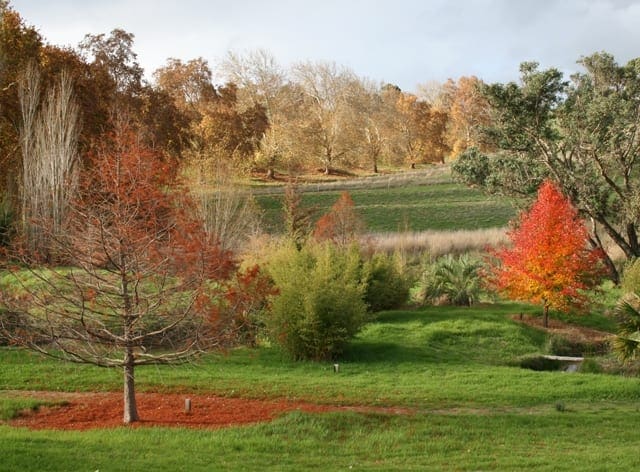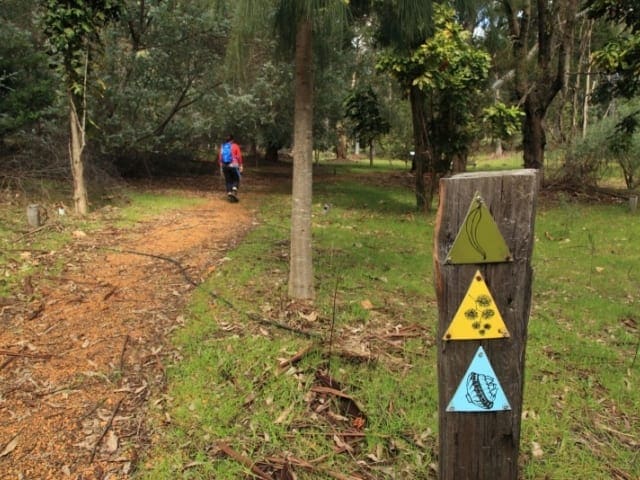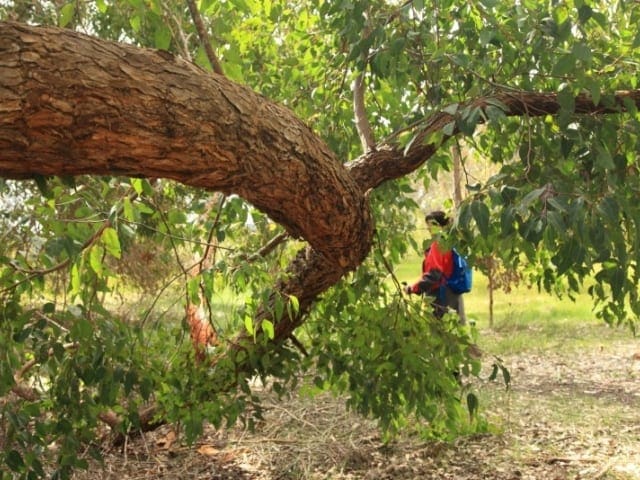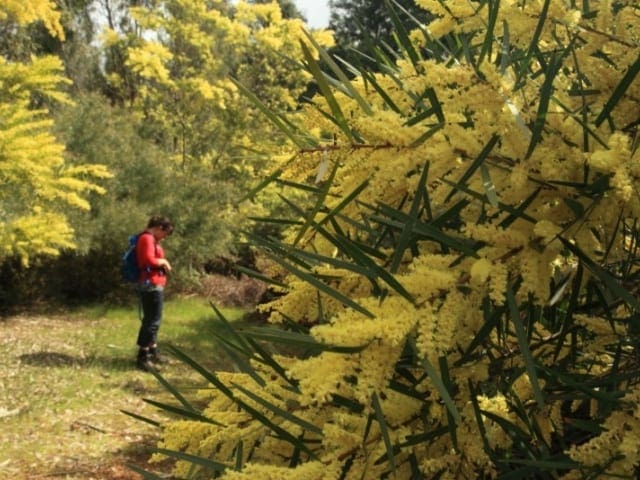Hike at a Glance
Max elevation: 0m
Min elevation: 0m
Total Ascent: 0m
Important info
This hike is classified as Grade 2 (Easy) due to its distance exceeding the typical Grade 1 limit of 5km. While the terrain itself is relatively easy and may still be suitable for all abilities, feel free to turn back at any point for a shorter adventure.
Hike overview
This trail starts at the Blackwood River Park and is straightforwaRoad as it follows the river. You can do 6km return, or up to 8km if you include Bridgetown streets. It is a stunningly beautiful walk, especially during winter and spring when the countryside is at its lush green best and the river is flowing strongly.
If you are in Bridgetown for a brief visit and enjoy walks, the 6km return Blackwood River Walk is a must do. It's only a short walk from the town centre so the trail is used a lot by friendly locals. A narrow trail gently undulates above the meandering river where blissful views of tranquil pools or sections of foaming rapids bring a smile to the walker. Although anytime of the day is fine, an early morning stroll or perhaps a brisk jog along this trail is a truly magical experience. During late winter and spring, mist often shrouds the valley, penetrated by beams of sunlight illuminating mossy logs, tall trees and lush green pastures. Bird calls echo throughout the valley, along with screeching red tailed black cockatoos. The more energetic can add a hilly 6km town section to complete the loop.
Gallery
Got some great shots from this hike? Upload your photos here to inspire others and show off the beauty of the trail!
Click to view form >>
Submitting your photos doesn’t mean you lose ownership. You can be credited for your contributions, and you can request removal at any time.
Content use
Please don’t copy GPX files or content from this site to AllTrails or other platforms. Each trail has been personally mapped, documented, and refined to support Australia’s bushwalking and hiking community. While some details come from land managers, every listing reflects significant personal effort. This is a free, community-driven initiative—your respect helps keep it that way.
Walk map and GPX file
It looks like I don’t have a GPX file for this trail yet. If you have one to share, please email it to me! I’ll verify it against official maps before adding it to help other hikers have a safer, easier experience. Thanks for contributing to a better hiking resource.
Getting there
Getting to the trailhead: Bridgetown.
Closest towns to this walk: Balingup, Boyup Brook, Donnybrook, Greenbushes, Nannup
About the region
The historic and picturesque area of Bridgetown-Greenbushes is ocated in the stunning south west of Western Australia. Bridgetown is the only town in the region to have been granted Historic Town status by the National Trust of Australia.
You will notice the abundance of natural beauty in the environment in and around the towns. The area boasts truly stunning and unique scenery, which you can best enjoy by putting on your walking shoes and experiencing it firsthand.
Both Bridgetown and Greenbushes have a number of interesting, varied and enjoyable trails for locals and visitors to enjoy. Please drop into the Bridgetown-Greenbushes Visitor Centre for a map or call them on (+61 8) 9761 1740 for further information.
Similar walks nearby
Looking for more walks in or near Bridgetown? Try these trails with a similar difficulty grade.
Track grade
Grade 2 (Easy) - A Gentle Introduction to Inclines: Grade 2 on the AWTGS represents easy walking tracks that offer a slightly more challenging experience compared to Grade 1. Similar to Grade 1, no prior bushwalking experience is required. The track surface is typically hardened or compacted and may have gentle hill sections or occasional steps. The total distance of a Grade 2 walk is typically no greater than 10 kilometers. These walks are still suitable for families with a bit more experience or those seeking a gentle introduction to some inclines.
Explore safe
Plan ahead and hike safely! Carry enough water, pack layers for changing conditions, and bring safety gear like a torch, PLB, and reliable communication device. Check official sources for trail updates, closures, and access requirements, and review local weather and bushfire advice. Most importantly, share your plans with someone before you go. Being prepared makes for a safer and more enjoyable hike! Stay Safe, Explore More, and Always #ExploreSafe.
Packing checklists
What you carry in your pack depends on factors like weather, terrain, and your adventure type. Not sure what to bring? My free planning, food, and packing checklists are a great starting point, covering day hikes, overnight trips, and multi-day adventures. Use them to customise your kit and always prioritise safety.
Let someone know
Before heading out, take a moment to fill out your trip intentions form. It’s a quick way to share your hike details with family or friends. If something goes wrong, they can notify emergency services, ensuring a faster response and peace of mind. Stay safe and enjoy your adventure
Suggest an edit
Spotted a change on this trail? Maybe there are new features, the route has shifted, or the trail is permanently closed. Whatever the update, I’d love your input. Your feedback helps fellow hikers stay informed and ensures that our trail info stays fresh and reliable.
Acknowledgement of Country
Trail Hiking Australia acknowledges the Traditional Owners of the lands on which we hike and pay respects to their Elders, past and present, and we acknowledge the First Nations people of other communities who may be here today.






